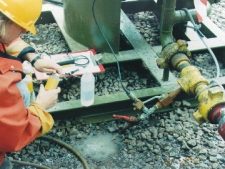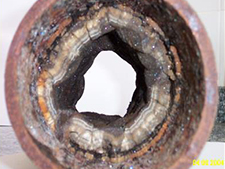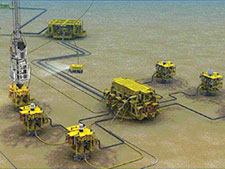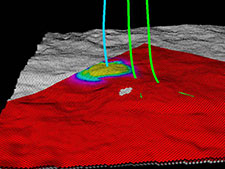Benefits
- Identification of these variations can reduce uncertainties in all those applications which use formation water compositions (e.g. calculation of OIIP, scale and corrosion prediction, inhibitor testing, etc).
- Interpretation of the causes of the variations can provide information to constrain the reservoir model.
Background
In some fields, formation water compositions vary across the reservoir. This may reflect (a) paleo-fluid flow and mixing of formation waters, and/or (b) the influence of reactions between the formation water and rocks/minerals in different parts of the field (e.g. halite, anhydrite, etc).
Formation water compositions in the hydrocarbon-leg may also differ from those in the underlying water-leg. Formation water in the hydrocarbon-leg may vary for the reasons noted above prior to reservoir filling but these variations may then be ‘trapped’ in place during filling. After filling is complete, the composition of formation water in the underlying water-leg may continue to change, again for the reasons above, and so may be different to the composition of formation water in the overlying hydrocarbon-leg.
Understanding how formation water compositions vary across the field can be useful for all those applications using formation water analyses. For example, uncertainties in calculated OIIP can be reduced. Similarly, more reliable scale predictions can be obtained for individual wells across the field, better decisions can be made regarding routing of fluids in surface facilities to minimise scale risks, and injection water breakthrough and injection water fractions can be more reliably determined.
We can collate your available formation water composition data and interpret your produced water analyses to identify spatial variations in formation water compositions in your field, and summarise the implications for you. We can also interpret the data to understand the causes of the variations. In some cases, the variations may be the result of variations in reservoir connectivity across the field allowing areas of higher and lower connectivity to be identified (including potential barriers to flow). Similarly, variations in formation water compositions produced from individual wells over time can sometimes be the results of changes in fluid flow directions in the reservoir as a result of water injection. These results can be used to constrain the reservoir model and aid reservoir management.
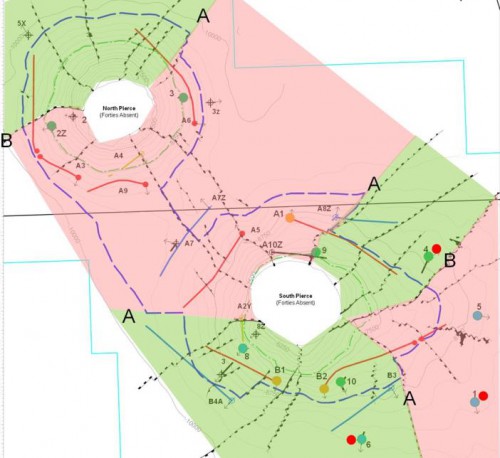
Figure showing compartment boundaries in the Pierce Field, UK North Sea, based on interpreted formation water analyses (McCartney et al, 2013a)


